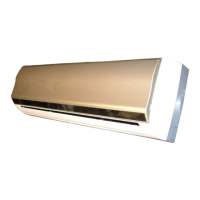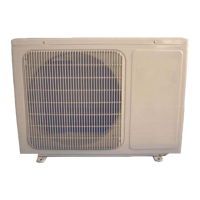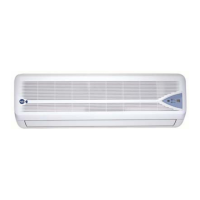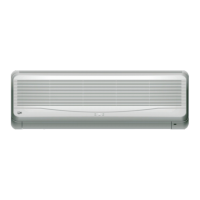
Do you have a question about the AUX ASW-H09A4/HSAR and is the answer not in the manual?
| Type | Split System |
|---|---|
| Cooling Capacity | 9000 BTU/h |
| Power Supply | 220-240V, 50Hz |
| Refrigerant | R410A |
| Weight (Indoor Unit) | 8 kg |
| Operating Temperature (Cooling) | 18°C to 43°C |
Visual presentation of indoor and outdoor units, dimensions.
Displays and controls for indoor units and remote control.
Manual operation control on the indoor unit.
Detailed layout and functions of the remote control buttons.
List of key attributes like appearance, design, and energy saving.
Explanation of the refrigeration cycle and components.
Explanation of the heating cycle and components.
General operation rules and compressor safety features.
Unit automatically selects mode based on ambient conditions.
Details of cooling mode operation and temperature control.
Functionality for reducing indoor humidity.
How the fan operates in ventilation mode.
Details of heating mode operation and temperature control.
Management of indoor fan during heating and afterheat.
Procedures for the automatic defrost cycle.
Activation conditions for supplemental heating.
Energy-saving mode with temperature adjustments.
Setting timers for automatic start/stop.
Manual activation of basic unit functions.
Safety mechanisms against electrical and thermal issues.
Error codes and their display for fault identification.
Control of louvre movement for airflow direction.
Technical specifications for 7000 BTU models.
Technical specifications for 9000 BTU models.
Technical specifications for 12000 BTU models.
Technical specifications for 24000 BTU models (Type A).
Technical specifications for 24000 BTU models (Type B).
Step-by-step guide to disassembling the indoor unit.
Step-by-step guide to disassembling the outdoor unit.
Advice for customers on power and installation preparation.
General order of installation tasks.
Process for mounting and securing the outdoor unit.
Process for mounting and connecting the indoor unit.
Procedures for refrigerant lines and system purging.
Wiring the unit and initial operational checks.
Systematic steps to identify and analyze issues.
Categorization of typical problems like leaks, blocks, and burns.
Specific reasons and remedies for various operational faults.











